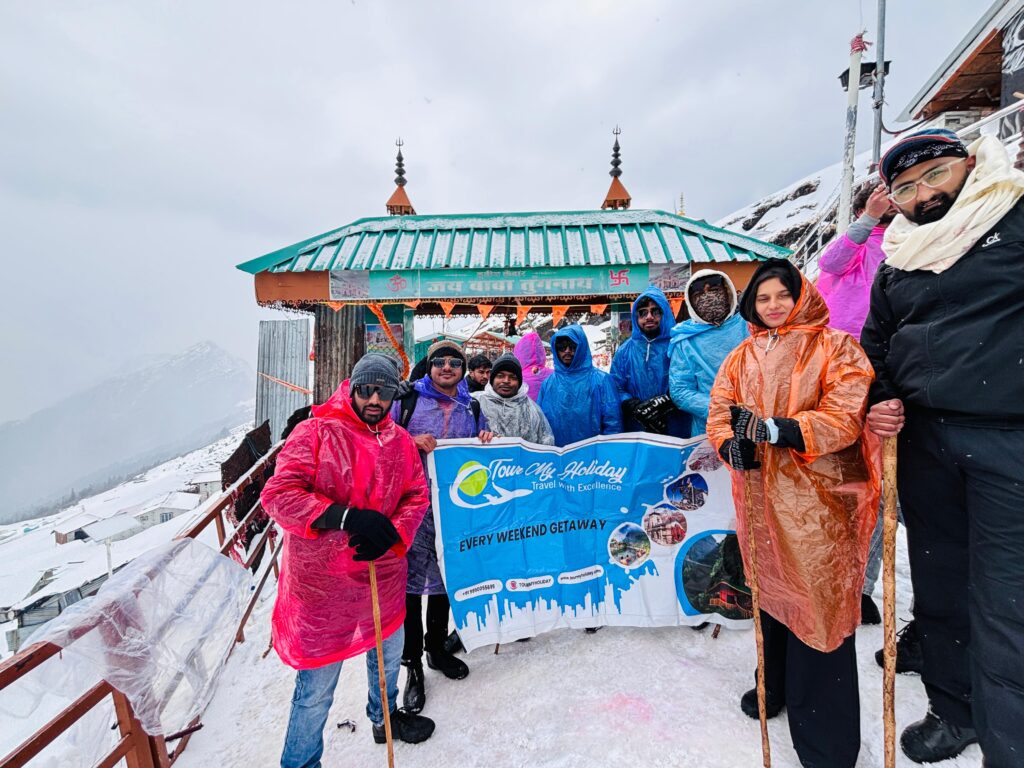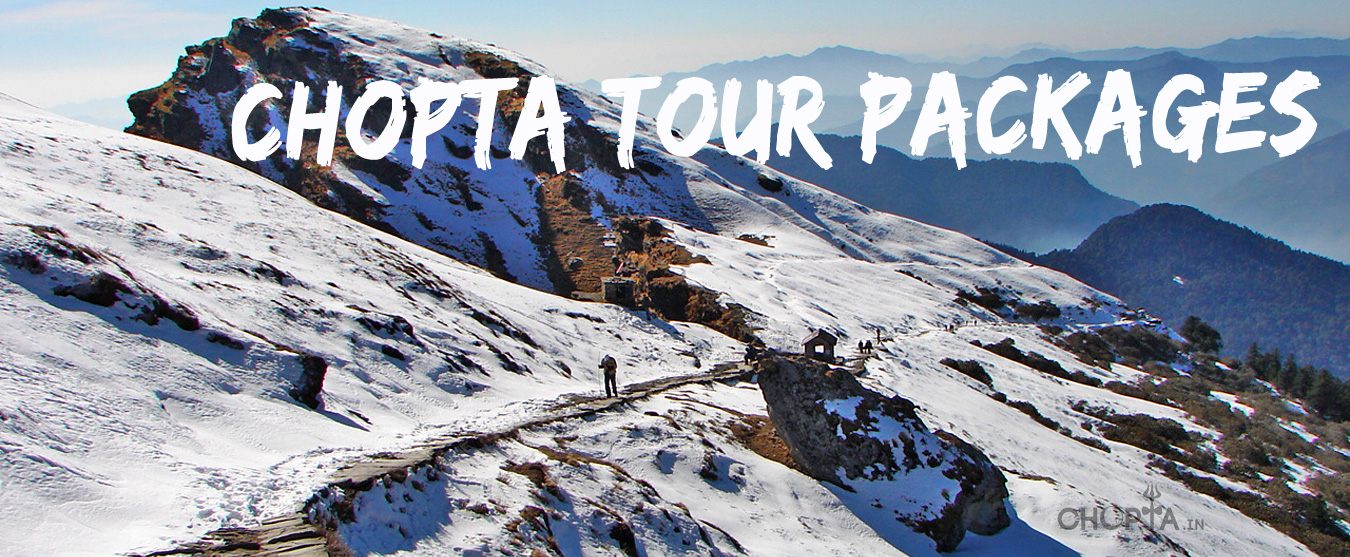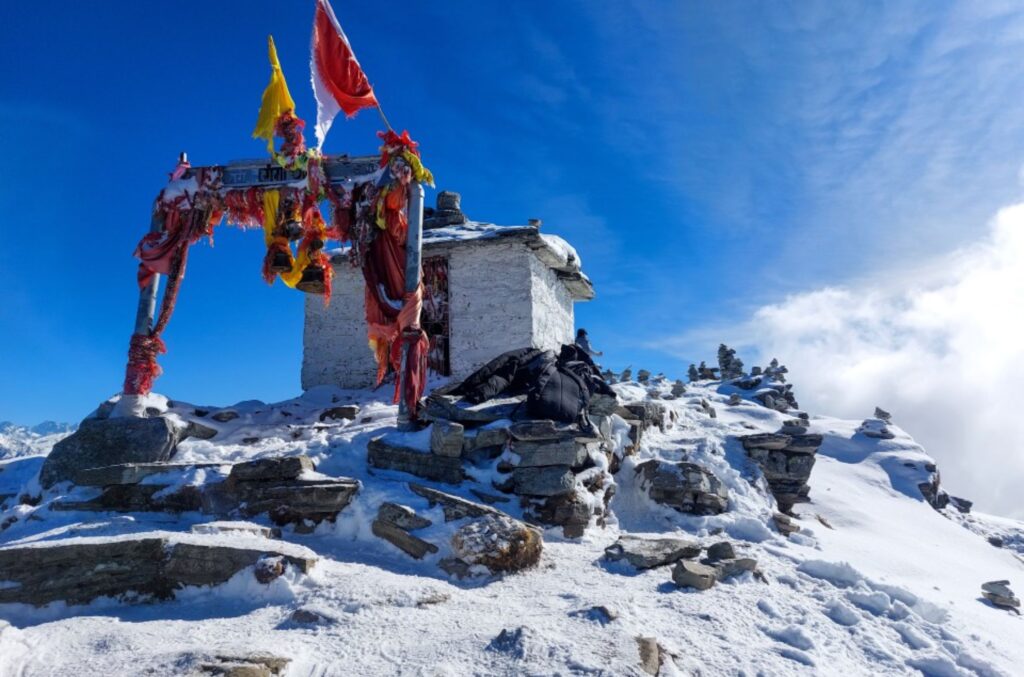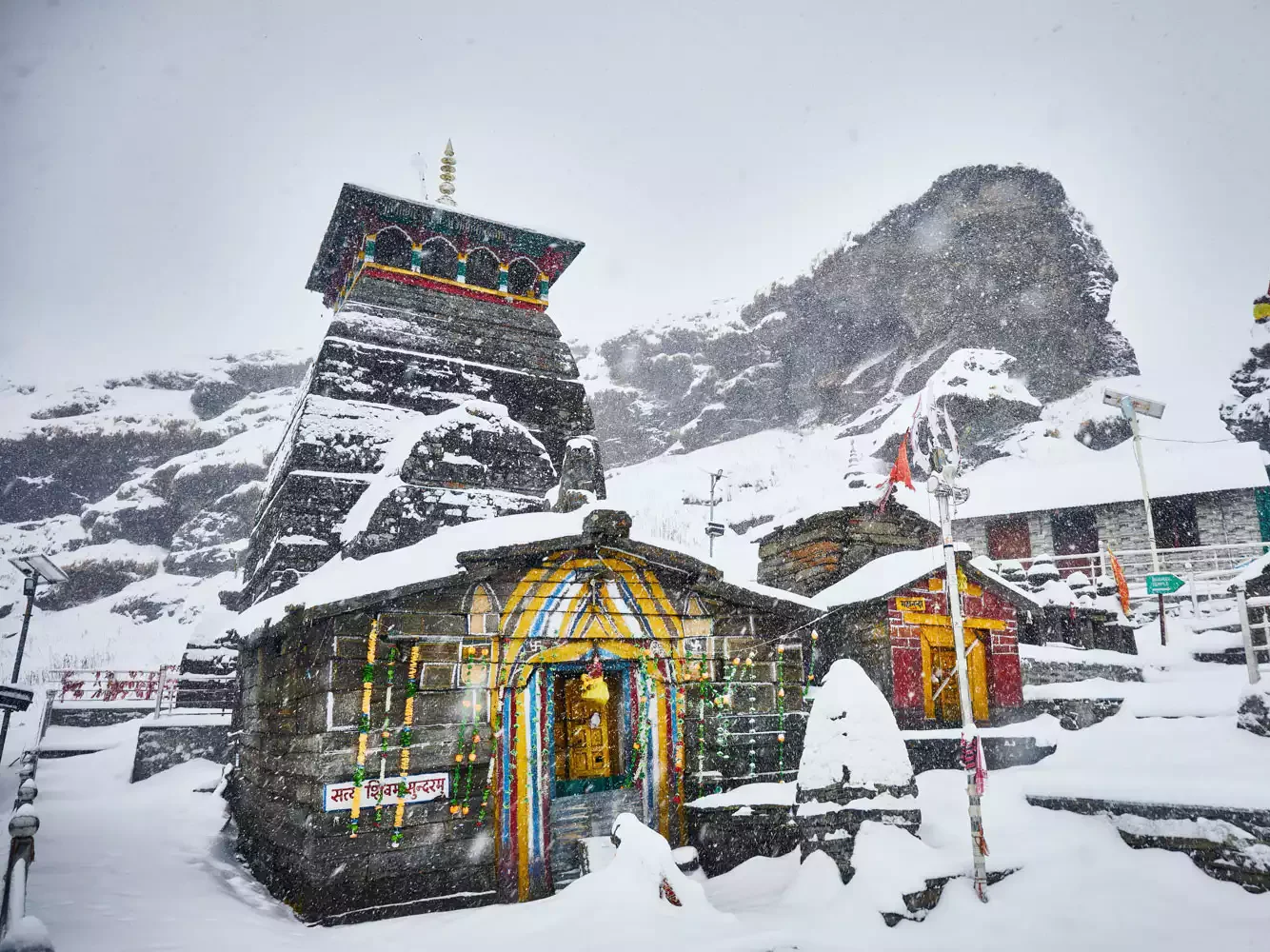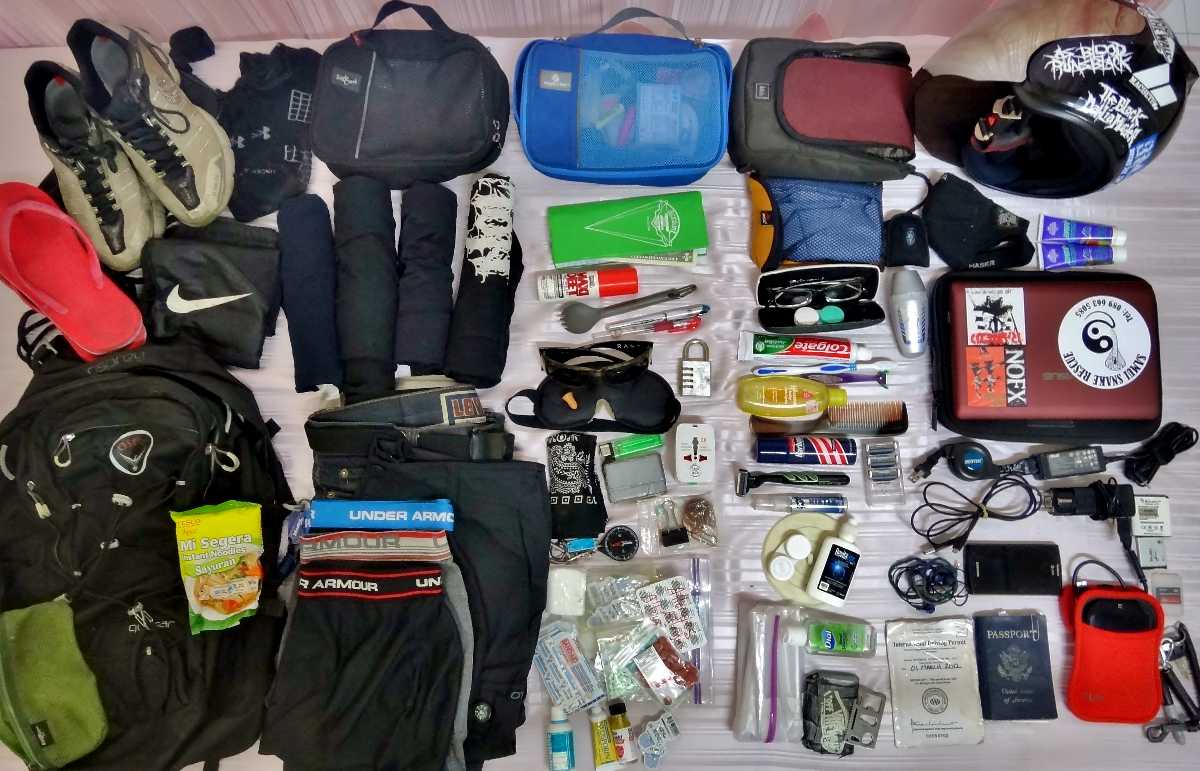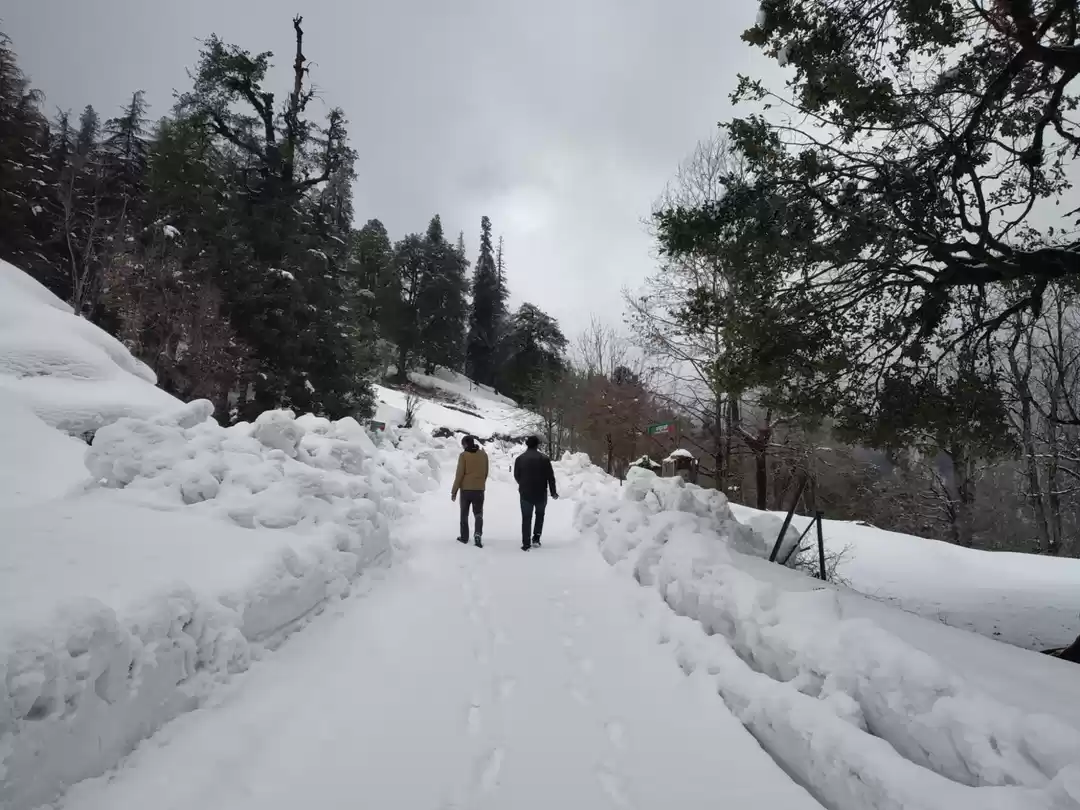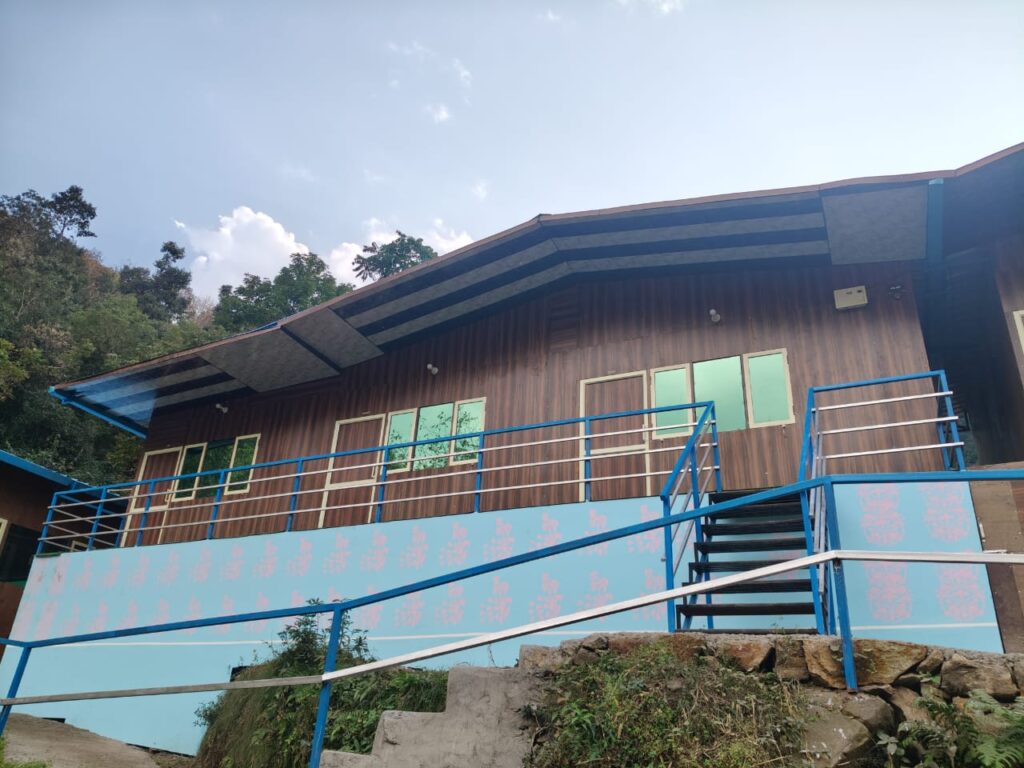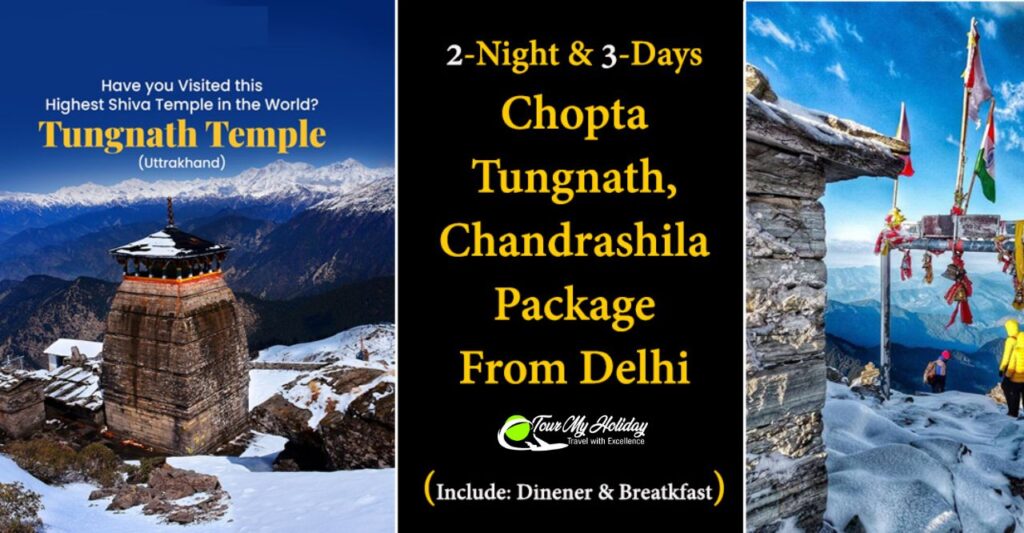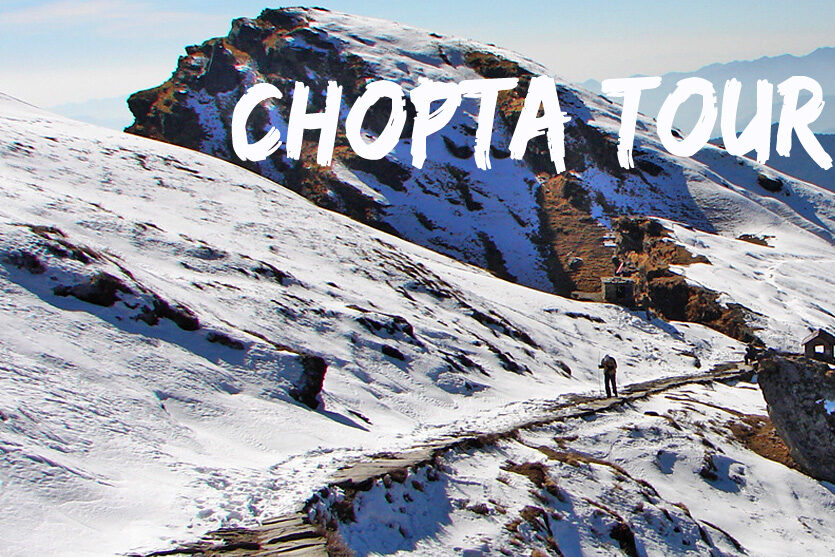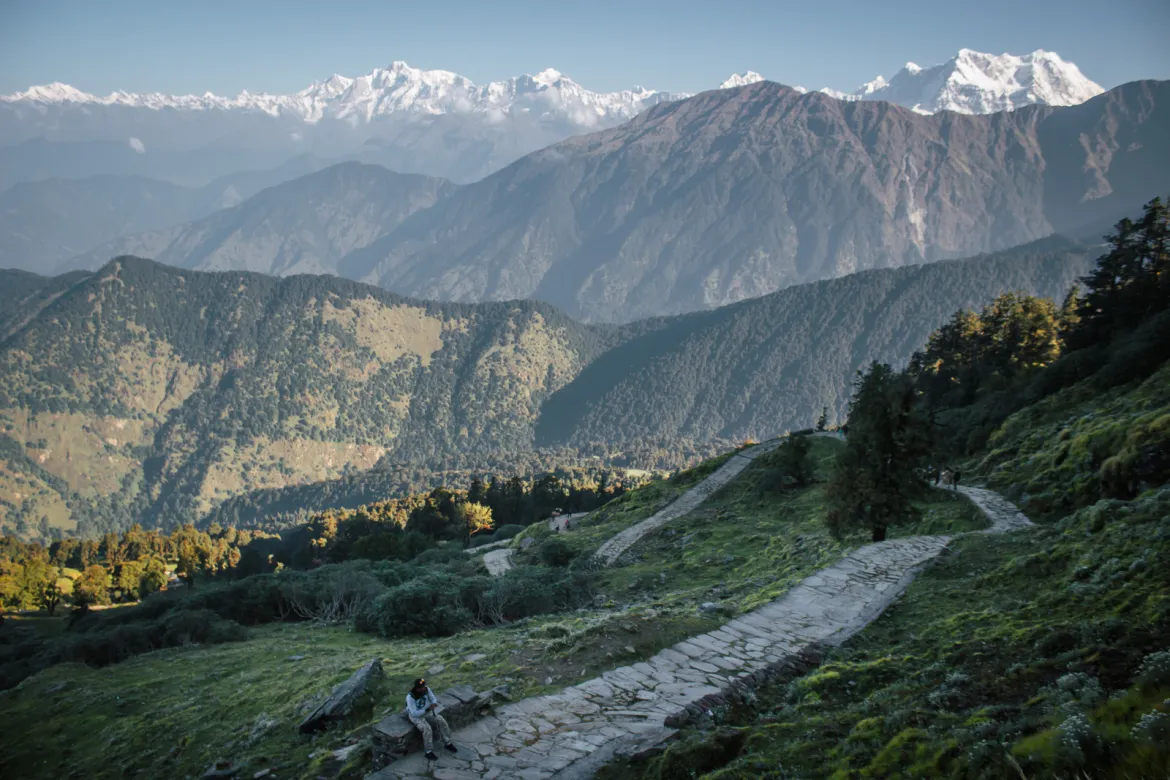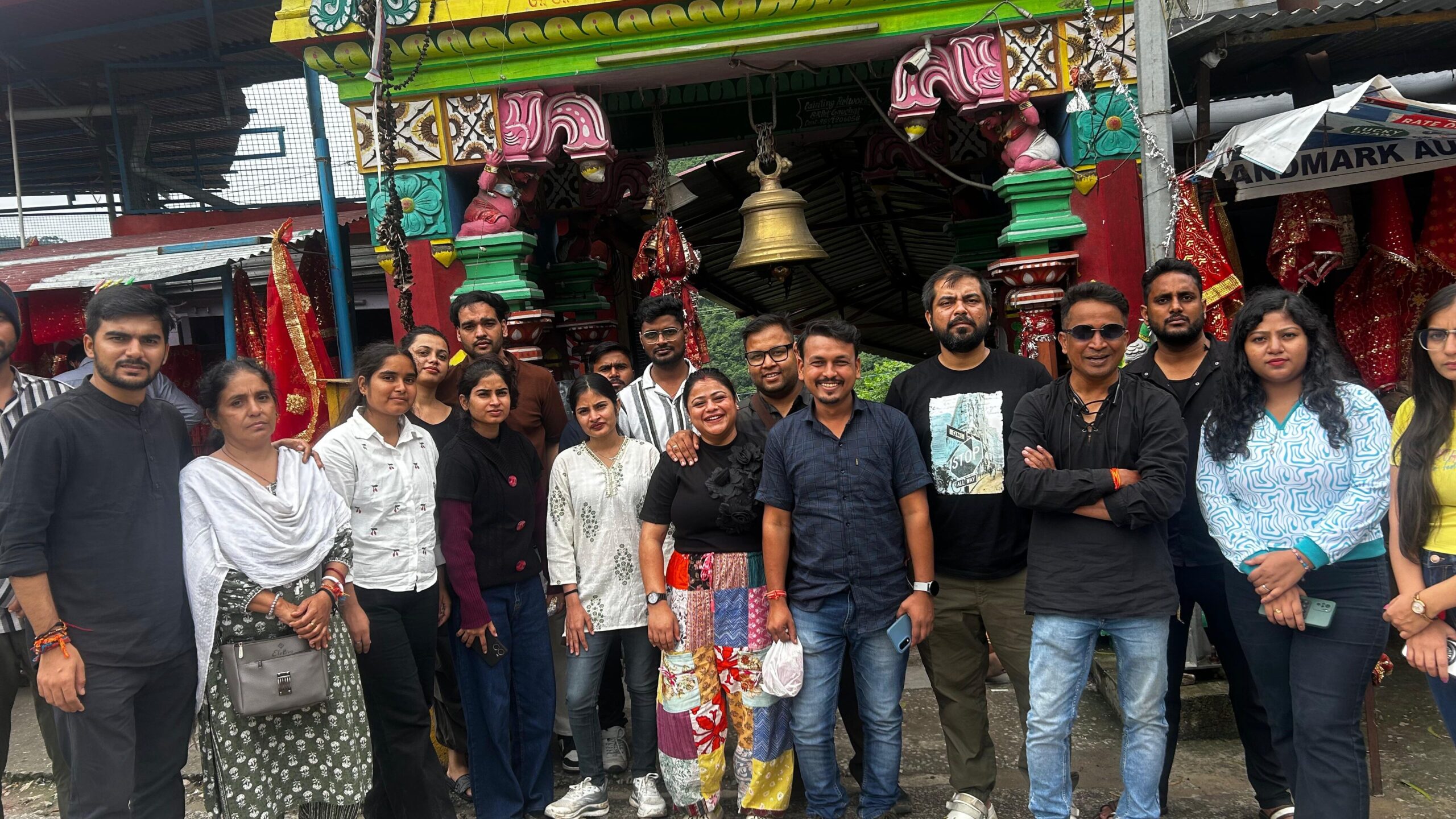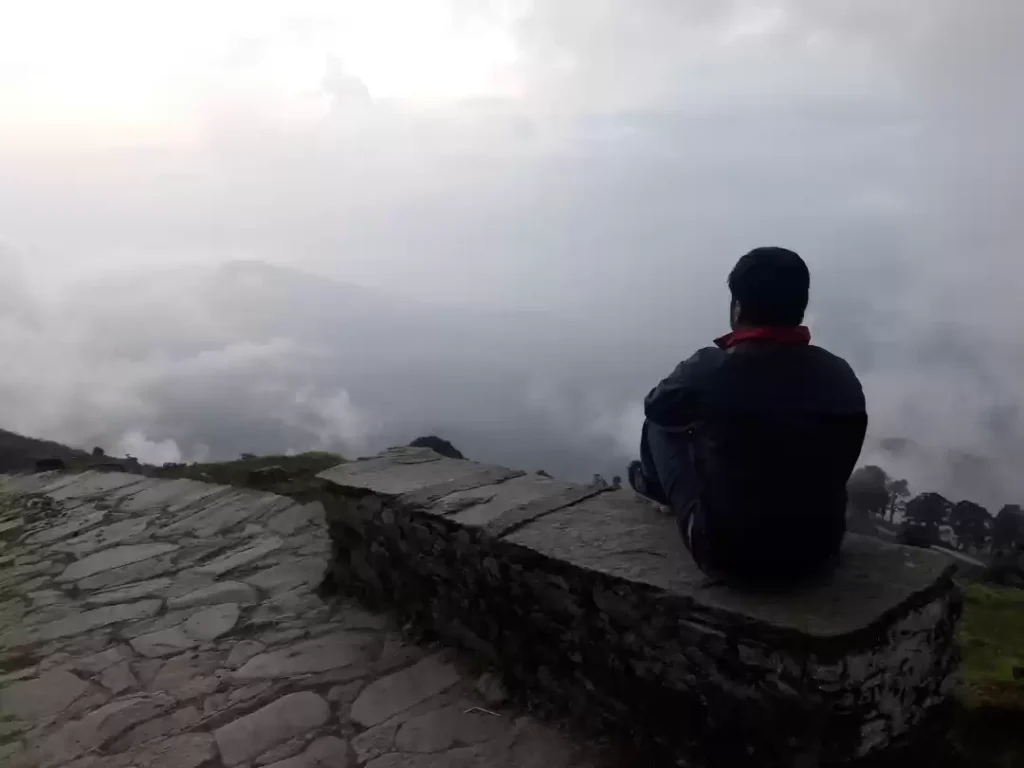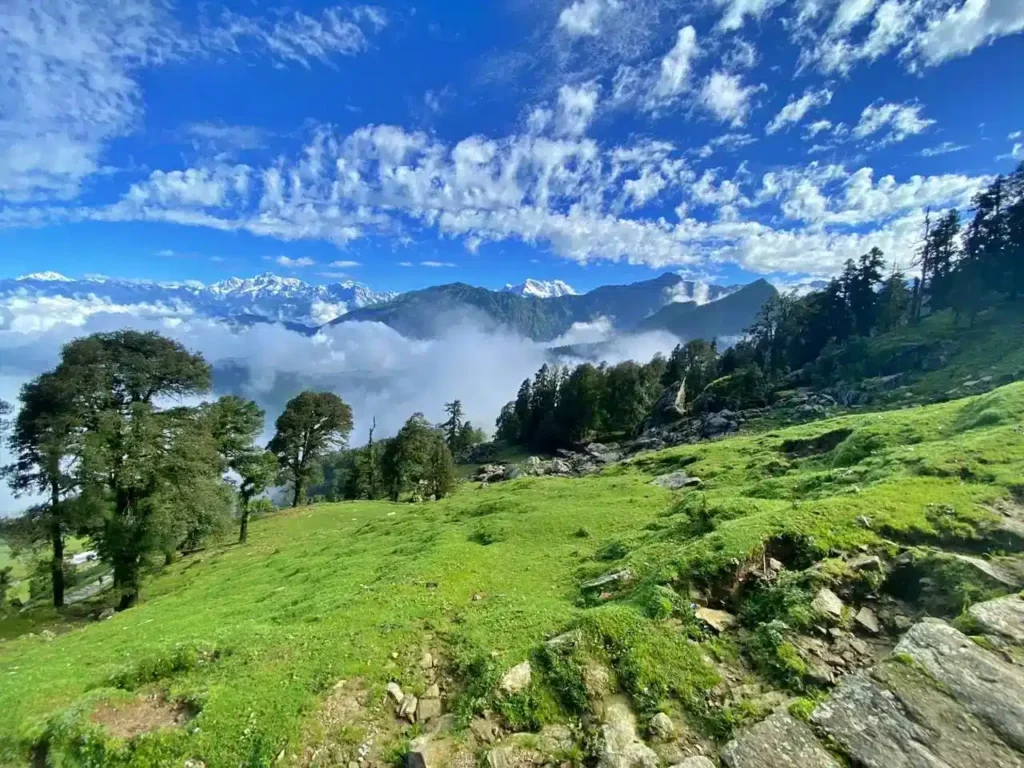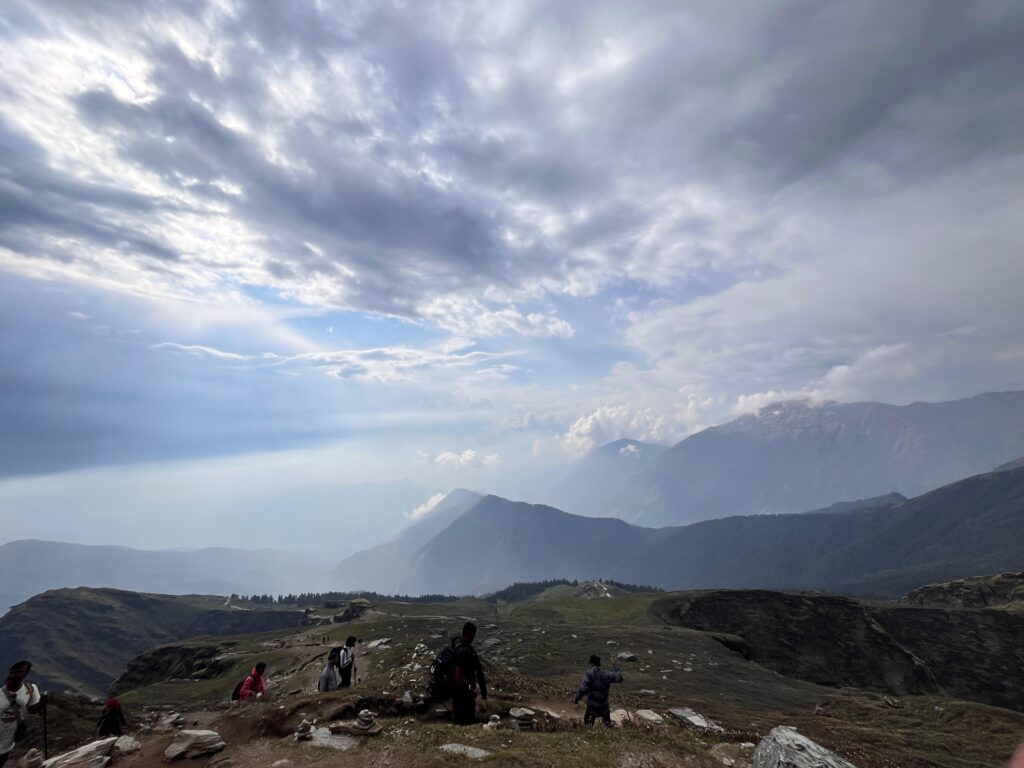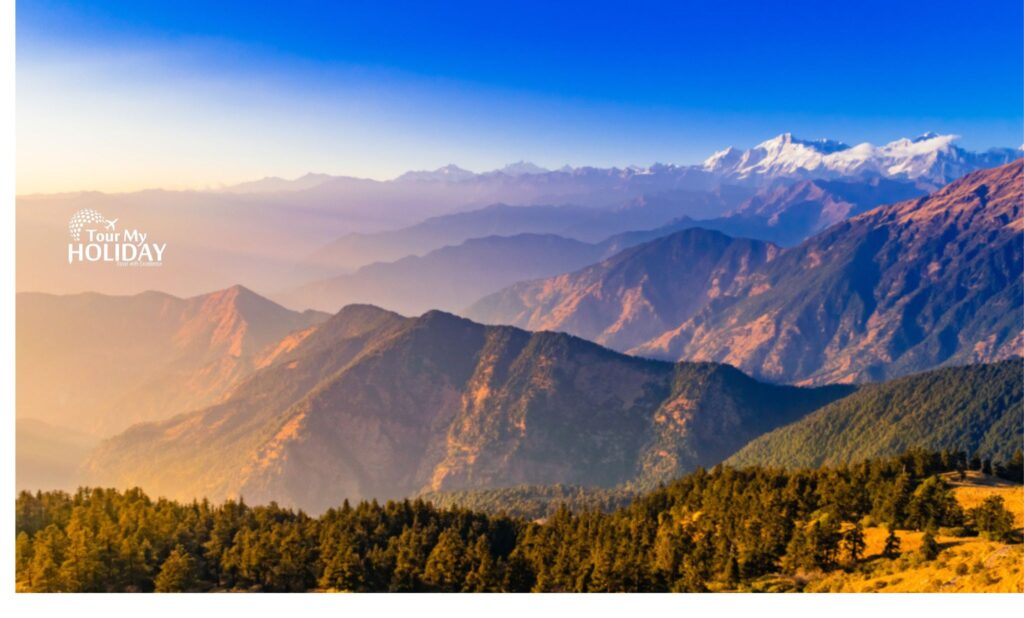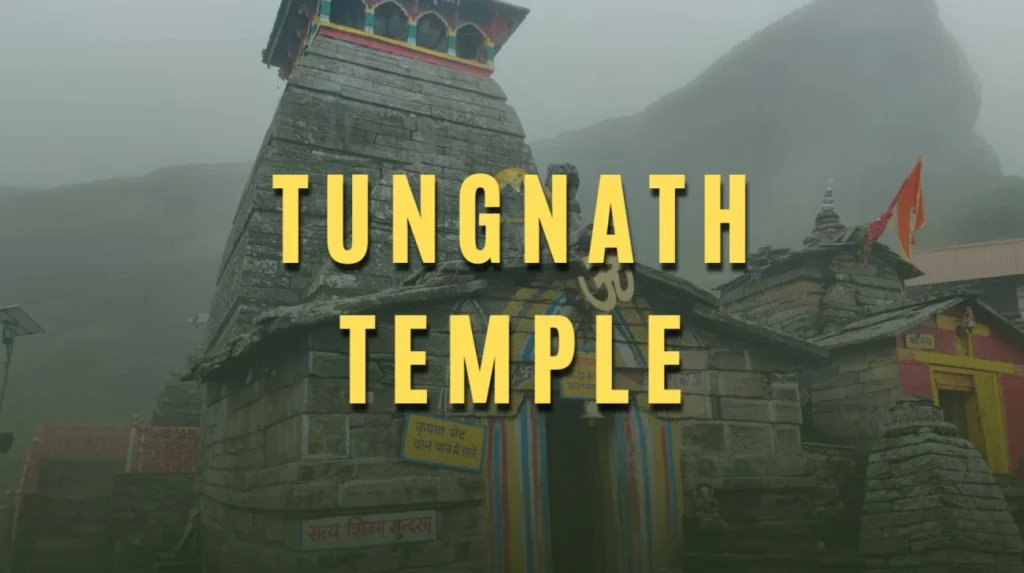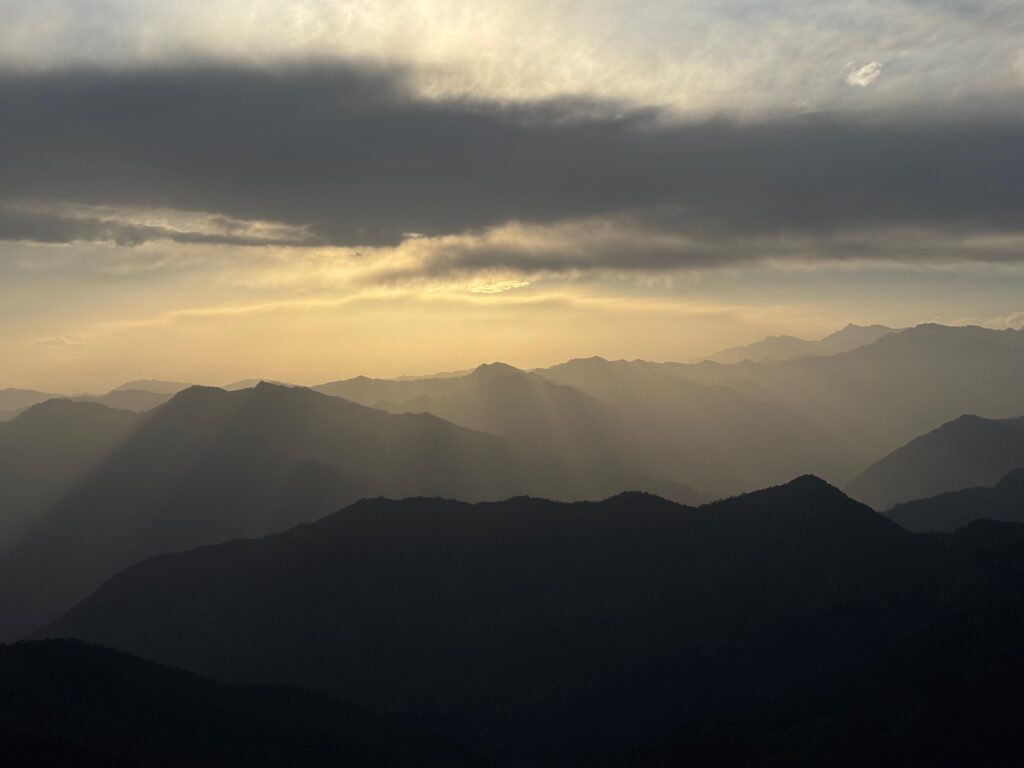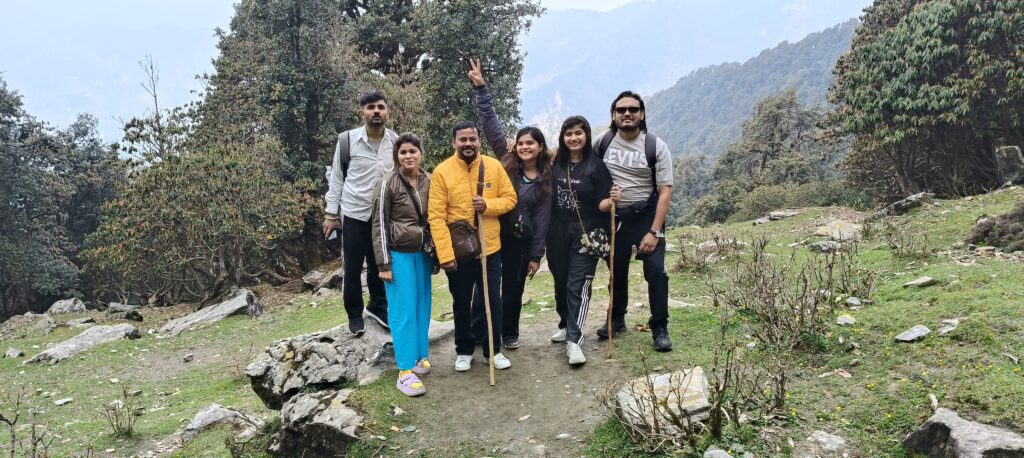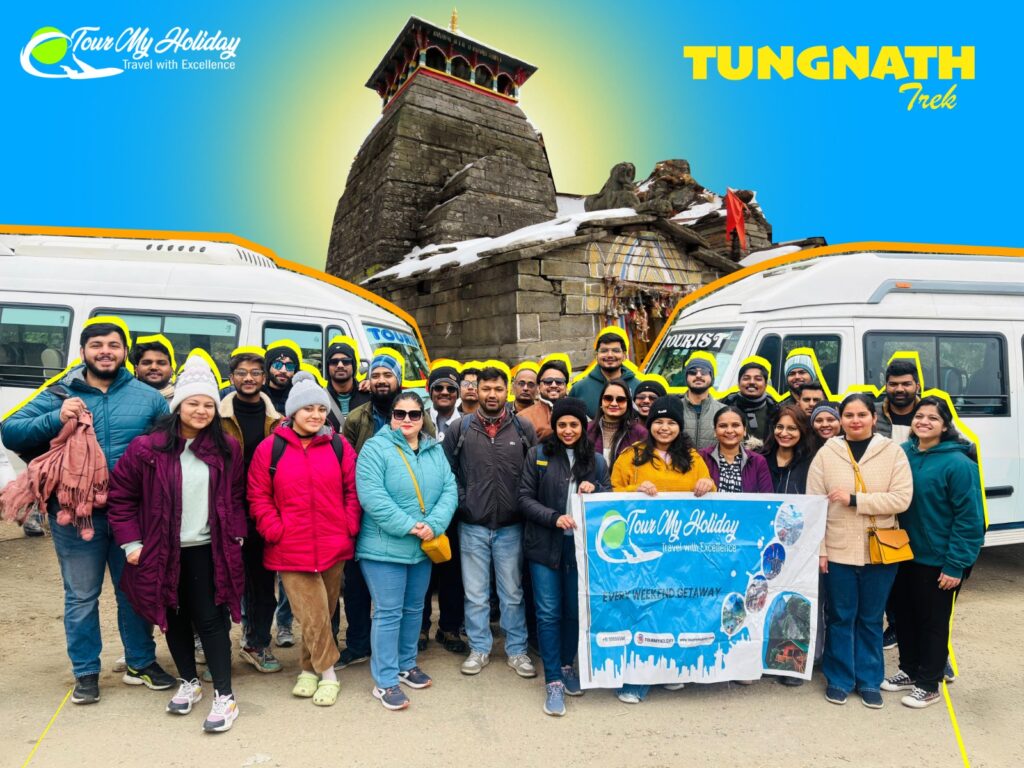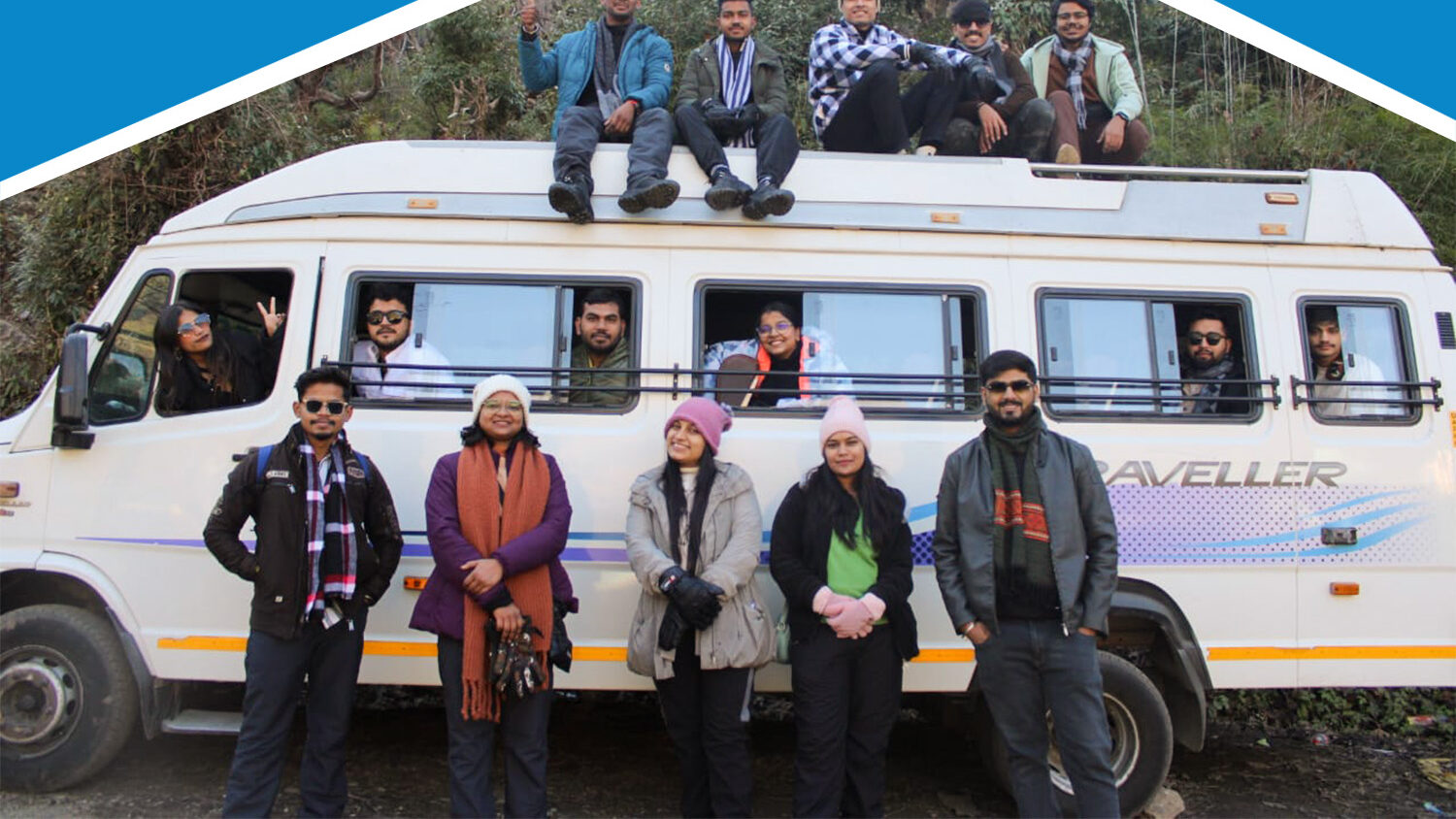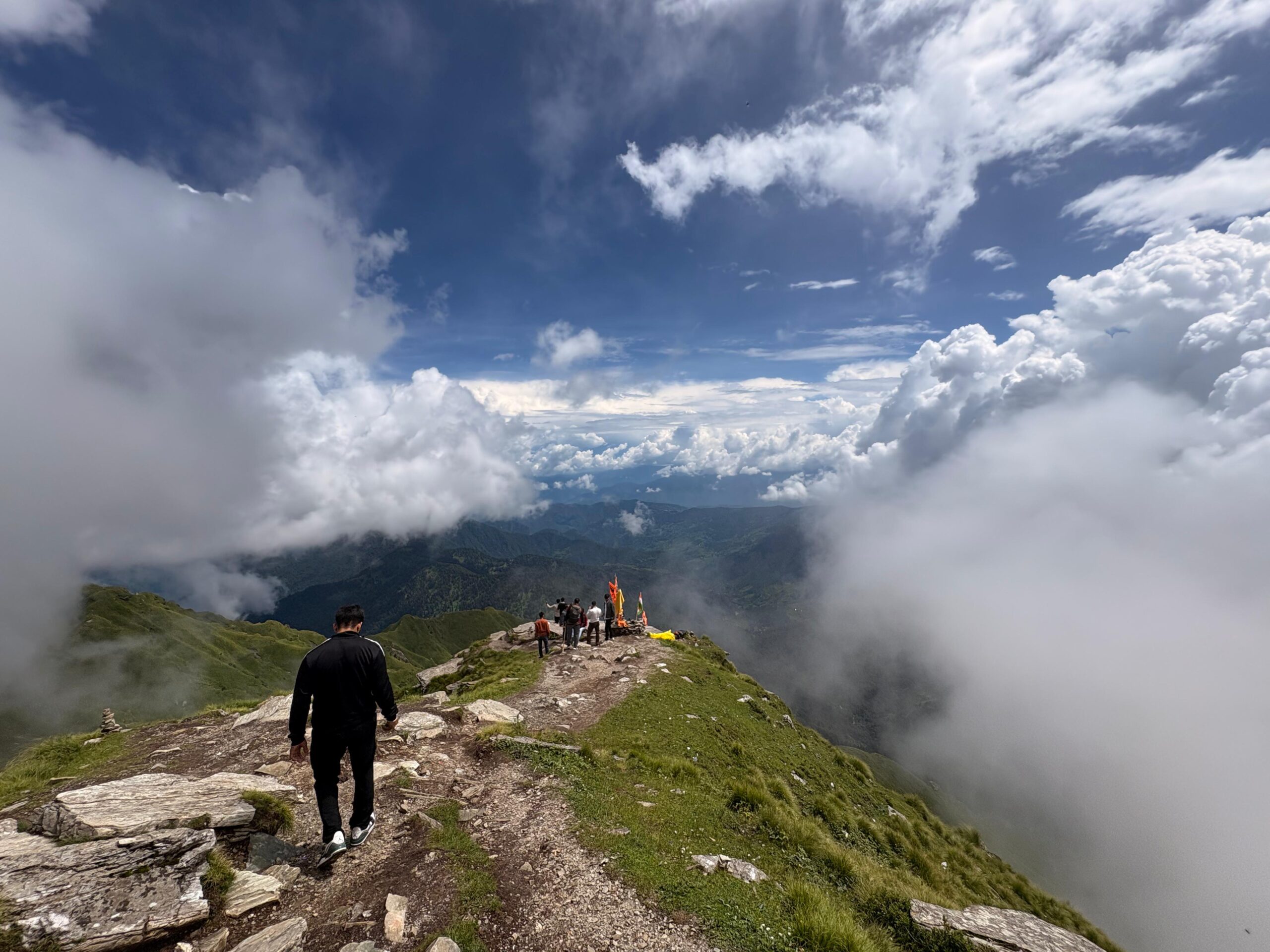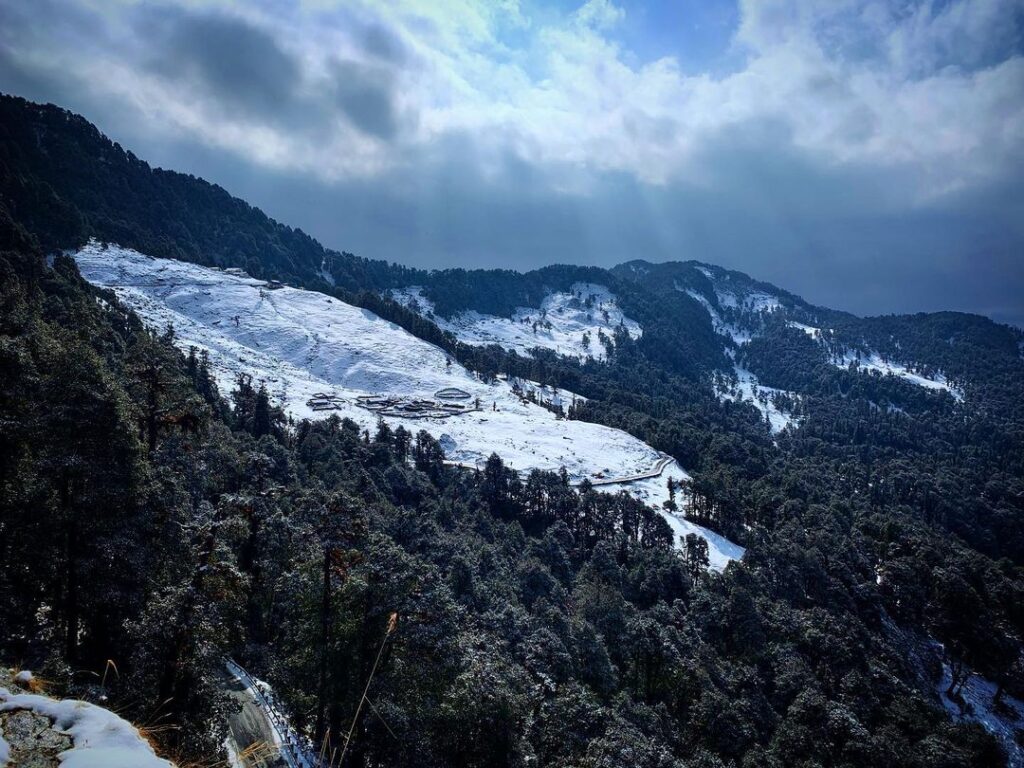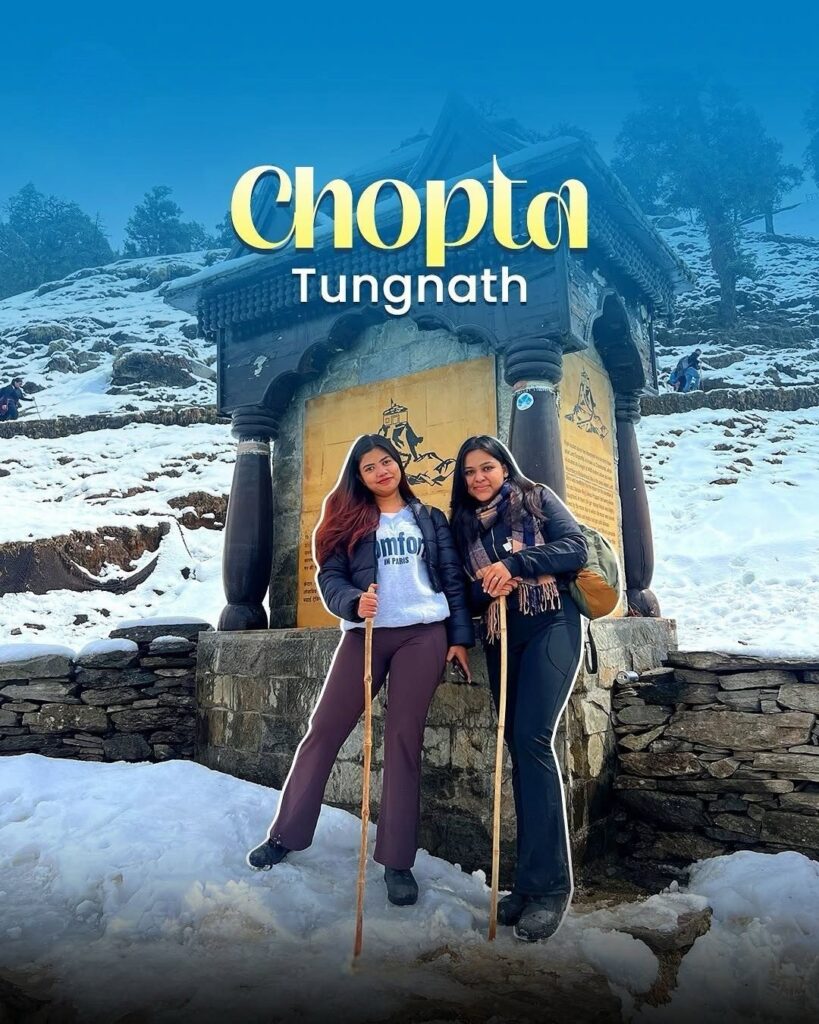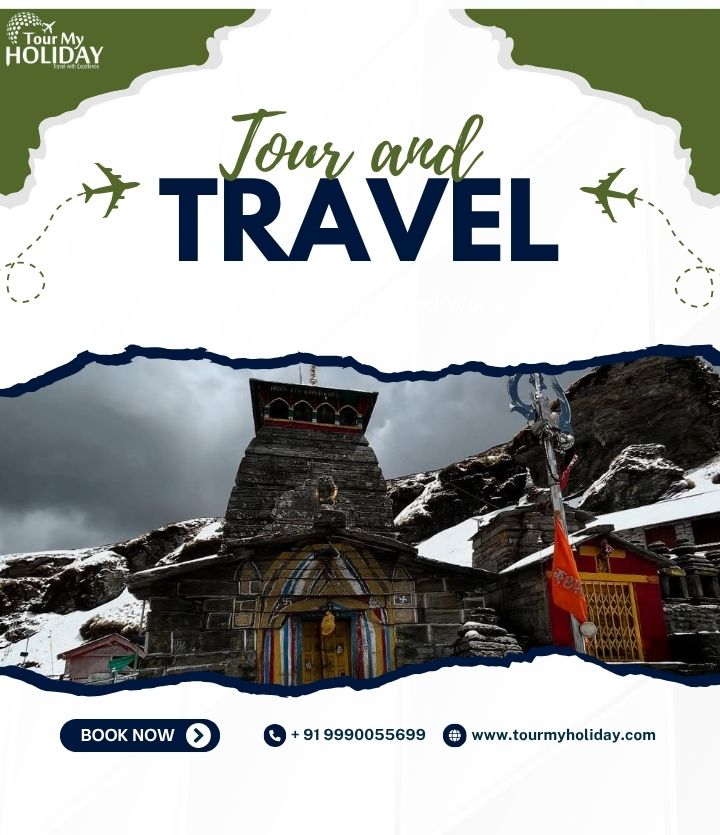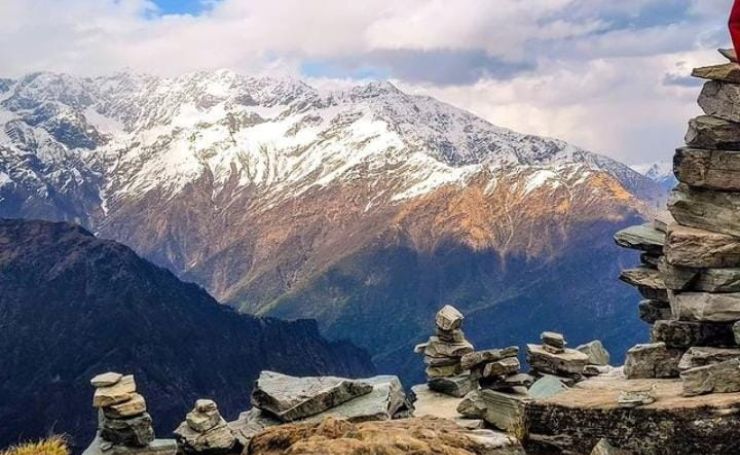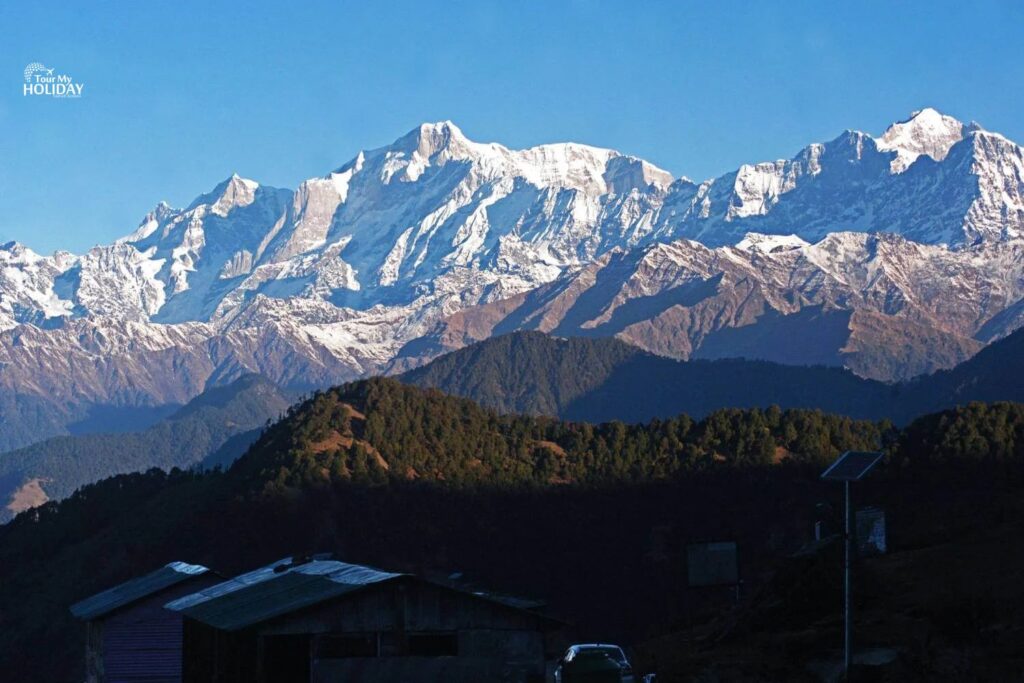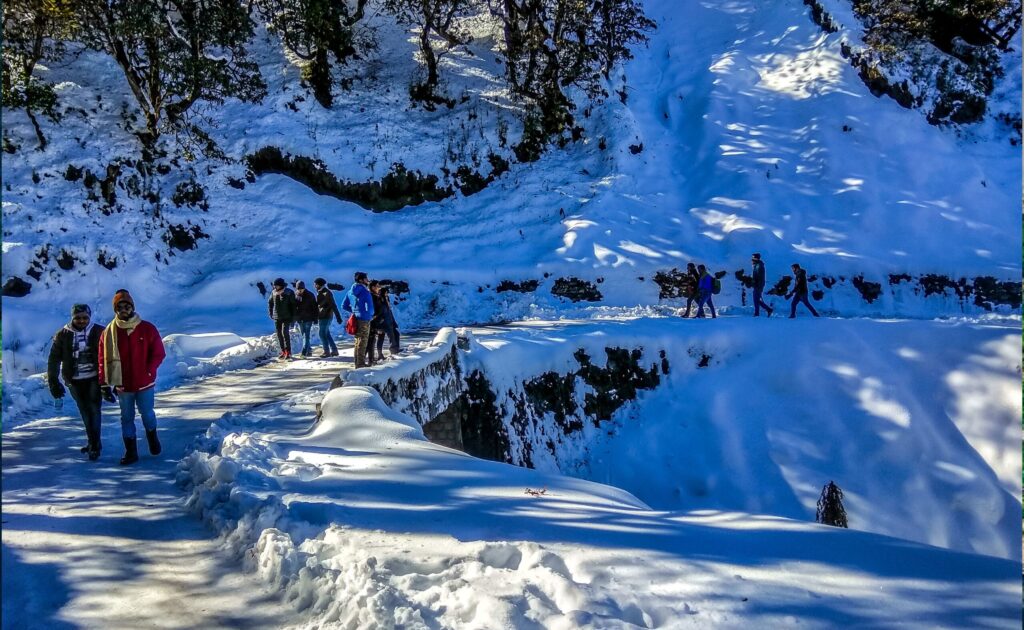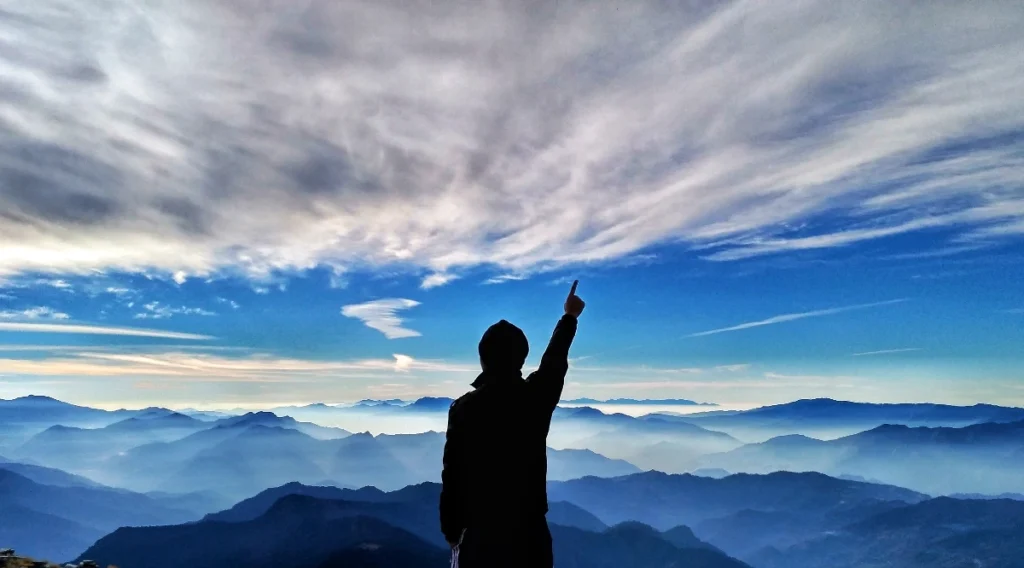As summer fades and winter begins, the “Seasonal Change Special: Chopta Tour Package” offers a unique opportunity to experience nature’s stunning transition in the Himalayas. This chopta tour package showcases the best of both worlds—lush green meadows that slowly turn into snow-clad landscapes. Ideal for adventure seekers and nature lovers alike, this chopta trekking tour package covers iconic trails including the chopta tungnath trek and the mesmerizing chandrashila summit trek.
Starting from Delhi, the Chopta Tour Package From Delhi ensures convenient transportation and expert-guided treks to Tungnath Temple, the highest Shiva temple in the world. The journey includes breathtaking views, spiritual exploration, camping under stars, and cozy bonfires in the crisp winter air. Whether you choose the chopta tungnath trek package or the broader chopta chandrashila trek, this experience blends physical challenge with serene moments amid the changing seasons.
This seasonal change special is perfect for travelers looking for a memorable winter adventure combined with cultural visits. Book this chopta tungnath tour or chopta trekking tour package now to secure your spot for the 2025 trekking season and discover the magic of Chopta as summer ends and winter begins.
This content integrates key search terms naturally while inviting interested trekkers to explore Chopta’s seasonal beauty and tour offerings.
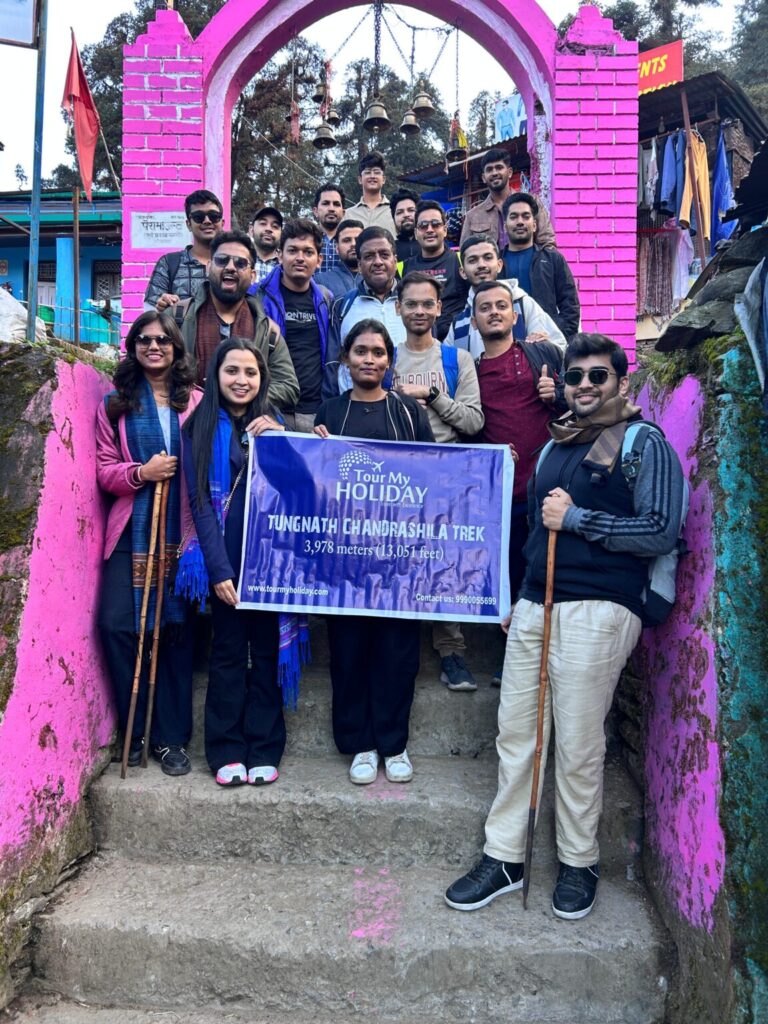
Overview of Chopta’s Seasonal Transition: From Summer Greens to Winter Whites
Chopta experiences a beautiful change of seasons, moving from the fresh greens of summer to the calm whites of winter. During summer, from April to June, Chopta is covered with lush green meadows and vibrant wildflowers, making it an ideal time for trekking. The temperatures range from 10°C to 30°C, offering a comfortable climate for the popular Chopta Tungnath trek and the Chandrashila summit trek. These months also offer clear skies and panoramic views of iconic peaks like Nanda Devi and Chaukhamba.
As summer ends and winter begins, typically from October to February, the weather in Chopta shifts dramatically. The green meadows gradually turn into snow-covered landscapes. Snow blankets the region, especially in December to February, when temperatures can drop below freezing. This season is perfect for adventure lovers who want to experience snow trekking and camping under the stars. The Chopta trekking tour package during this season offers a unique chance to witness the peaceful Himalayan environment in its winter attire.
A Chopta tour package from Delhi often includes trekking to the Tungnath Temple and Chandrashila summit, along with comfortable accommodation and guided services. Whether you choose the Chopta Tungnath trek package or the broader Chopta tour packages, the seasonal shift adds charm and excitement to your journey. Prepare well for the cold and experience the serene beauty of Chopta as it transforms from summer greens to winter whites.
This seasonal transition makes Chopta a perfect getaway for trekkers seeking diverse landscapes and unforgettable adventures throughout the year.
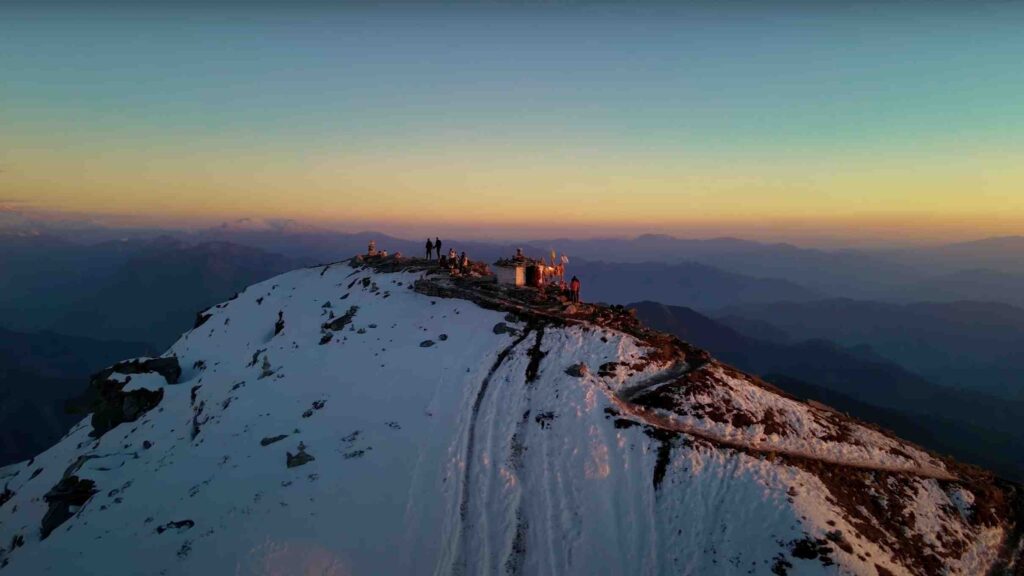
Why Choose a Chopta Tour Package During This Unique Season
Choosing a Chopta tour package during the unique season when summer ends and winter begins is an excellent decision for many reasons. This period offers a special blend of weather and scenery that is hard to find anywhere else. The summer greens slowly fade, and the first snowflakes add a magical touch to the landscape, creating a perfect setting for trekking and adventure.
A Chopta tour package during this time includes some of the best experiences, like the Chopta Tungnath trek and the Chandrashila summit trek. These treks become more exciting as the pathways get covered with snow, and the views of Himalayan peaks like Nanda Devi become even more breathtaking. For travelers coming from Delhi, the Chopta tour package from Delhi ensures smooth transportation, making the journey hassle-free.
This season is ideal for trekkers of all levels. The weather is cool but manageable, and the natural beauty is unmatched. Camping under the starry sky with a bonfire adds to the charm of the Chopta trekking tour package, making it a memorable adventure. Choosing a Chopta tour package in this unique season gives you the chance to experience nature’s transformation while exploring spiritual spots like Tungnath Temple.
In short, booking a Chopta tour package during this seasonal change offers a well-rounded travel experience with beautiful landscapes, adventure, cultural insights, and convenient planning—all in one. It is a perfect time for anyone looking to enjoy the natural beauty and peaceful environment of Chopta.
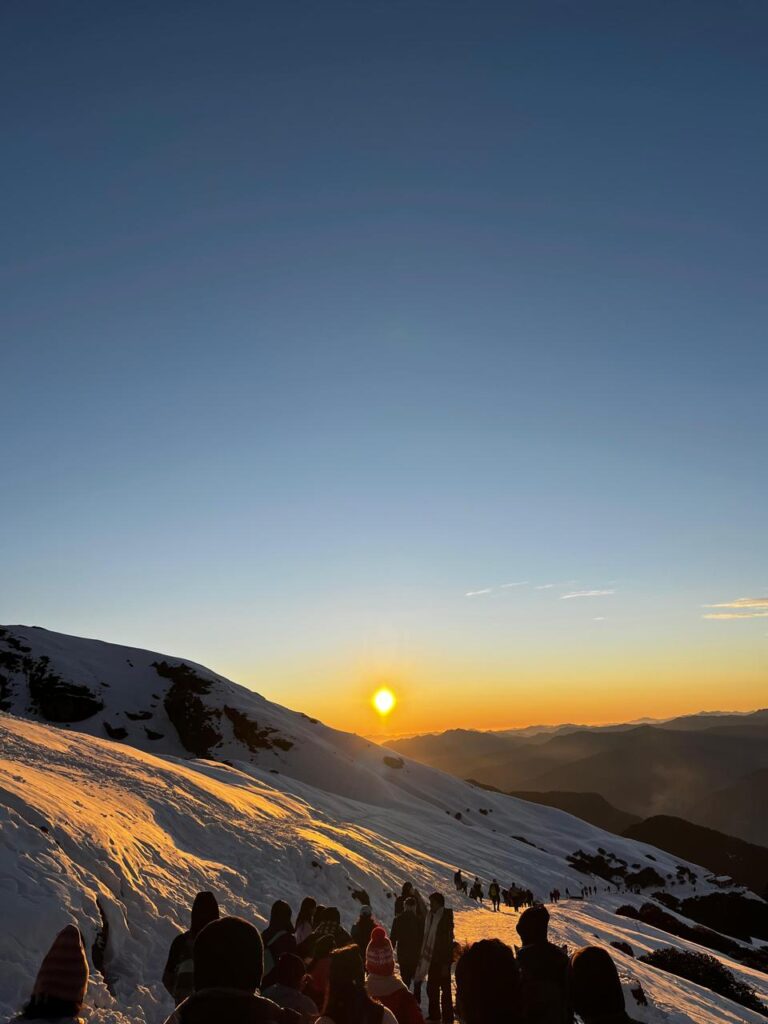
Top Attractions in Chopta as Summer Ends and Winter Begins
As the vibrant summer fades away, Chopta transforms into a breathtaking winter destination. Visitors can enjoy the unique beauty of this seasonal shift while exploring some of the best trekking routes in Uttarakhand.
Tungnath Temple Trek
A highlight of any Chopta trip is the Chopta Tungnath trek package. This trek leads to Tungnath, the highest Shiva temple in the world, surrounded by majestic snowy peaks. The trail is perfect for those seeking both spiritual and adventurous experiences.
Chandrashila Summit Trek
The Chopta Chandrashila trek, included in many popular Chopta tour packages, takes trekkers to the powerful Chandrashila summit. From here, panoramic views of the Himalayan giants like Nanda Devi, Trisul, and Chaukhamba await. Early winter trekker numbers are lower, providing a serene trekking experience.
Easy Access from Delhi
For travelers starting their journey in the city, the Chopta tour package from Delhi offers convenience and comfort. Transport, guides, accommodation, and meals are all arranged so trekkers can focus fully on experiencing the natural wonders.
Camping and Nature Experiences
Many Chopta trekking tour packages include overnight camping, giving adventurers the chance to enjoy chilly, clear nights around a bonfire beneath the starry sky. Wildlife spotting and nature photography are also popular activities during this season.
Chopta’s transition from summer greens to winter whites creates an unforgettable setting. The combination of nature, culture, and trekking thrill makes it an ideal destination. Book a Chopta trekking tour package to experience this unique seasonal charm in 2025.
This season offers a less crowded, peaceful escape perfect for nature and trekking enthusiasts eager to witness Chopta’s stunning transformation.
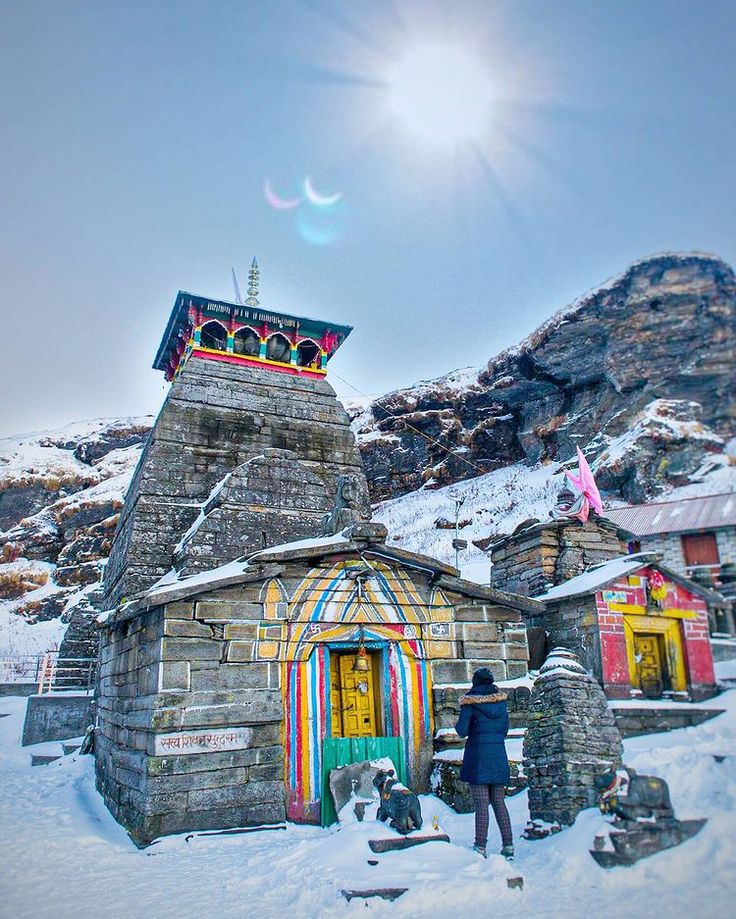
Preparing for the Cold: What to Pack for the Winter Arrival
As winter approaches Chopta, it is important to pack smartly to enjoy your trip comfortably. The Chopta Tungnath trek package and other Chopta trekking tour packages require careful preparation because temperatures can drop significantly, especially during the night.
First, warm clothing is a must. Pack thermal innerwear, full-sleeve t-shirts, fleece jackets, and insulated waterproof jackets to stay protected from cold winds and possible snowfall. Layering is the key to adjusting your comfort as daytime temperatures vary. Don’t forget woolen gloves, a hat, and a warm scarf to protect your hands, head, and neck, which are more sensitive to cold.
Good trekking shoes with grip and waterproof features are essential for the Chopta Chandrashila trek and Chopta Tungnath trek routes. Woolen socks will keep your feet warm during long walks and chilly nights. Trekking poles can help maintain stability on icy patches, especially during winter.
For camping included in many Chopta tour packages, consider a sleeping bag rated for cold weather, and a sturdy backpack to carry your essentials. Carry reusable water bottles and high-energy snacks to keep your energy up during trekking. Sunscreen and sunglasses are also important as the sun’s rays can be strong at high altitudes even during winter.
Pack basic first aid items and any personal medication you might need. Mobile chargers and power banks will keep your devices functional for navigation and emergencies.
A Chopta tour package from Delhi will often have a detailed packing list, but personal preparation with winter essentials guarantees a safe and enjoyable winter adventure in Chopta’s breathtaking mountain environment.
Proper packing ensures you make the most of your trek to the beautiful Tungnath temple trek and the scenic Chandrashila summit trek without discomfort from cold weather. It is the best way to enjoy the winter arrival in Chopta to its fullest.
Best Trekking Routes During the Seasonal Shift in Chopta
Chopta offers some of the most scenic trekking routes as the season shifts from late autumn into early winter. The popular treks include the Chopta Tungnath trek, Chopta Chandrashila trek, and the challenging Chandrashila summit trek. These routes offer diverse experiences depending on the season.
- Chopta Tungnath Trek: This trek leads to the highest Shiva temple in the world, Tungnath. The journey begins at Chopta, known as the ‘Mini Switzerland of Uttarakhand.’ During autumn, trekkers enjoy vibrant green meadows, colorful rhododendron forests, and clear skies with stunning mountain views. As winter arrives, the paths gradually get covered in snow, transforming the landscape into a winter paradise. Temperatures can range from 7°C to -12°C, and trekkers must be prepared for chilly weather and snow-covered trails.
- Chopta Chandrashila Trek: This trek is famous for stunning panoramic views from Chandrashila peak. Autumn months offer clear views of Himalayan giants like Nanda Devi and Trisul, while winter rewards trekkers with glittering snowy landscapes. The trail is moderate in difficulty and accessible for beginners and families. The trek also provides an opportunity to experience local culture, nature, and spirituality by visiting Tungnath Temple along the way.
- Chandrashila Summit Trek: A short but steep climb, this trek culminates in breathtaking 360-degree views of the Himalayas. During the seasonal shift, the summit often wears a white blanket of snow, providing excellent conditions for winter trekking enthusiasts.
Many Chopta tour packages and Chopta tour package from Delhi include these treks with accommodation, guides, and meals for a hassle-free adventure. Whether you prefer the colorful vibrancy of autumn or the serene snow-covered trails of winter, these trekking routes in Chopta provide a memorable Himalayan experience.
Proper preparation for weather changes and trail conditions will ensure a safe and enjoyable trek during this seasonal shift.
This trekking experience balances adventure, nature, and spirituality, making it a top choice for trekkers visiting Chopta in late autumn and early winter.
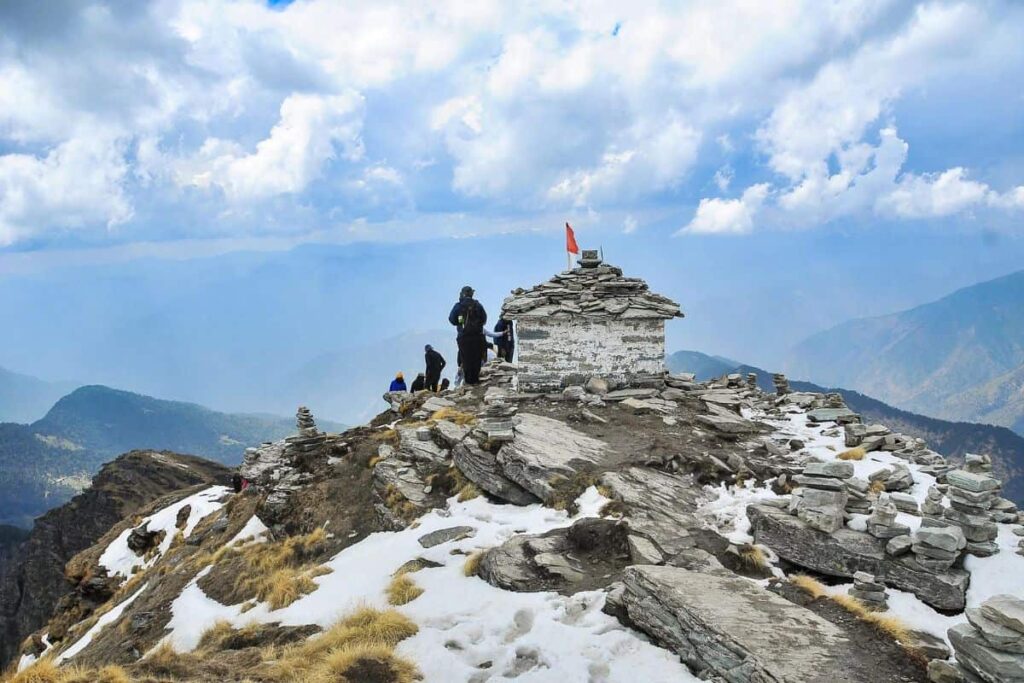
Experience the Spiritual Journey: Tungnath Temple in Autumn-Winter
The journey to Tungnath Temple is a deeply spiritual experience, especially during the autumn and winter seasons. Here’s a breakdown of what to expect on this sacred trek from Chopta, a popular Himalayan destination known for its stunning natural beauty and peaceful ambiance.
Overview of Tungnath Temple Trek
- Starting point: Chopta village, surrounded by pine and deodar trees
- Distance: Approximately 3.5 kilometers one way from Chopta to Tungnath
- Elevation: Tungnath Temple sits at 3,680 meters (12,073 feet) making it the highest Shiva temple in the world
- Difficulty: Easy to moderate, suitable for trekkers with a basic level of fitness
What Makes the Autumn-Winter Trek Special?
- Autumn (September to November) offers cool, pleasant weather with clear skies and vibrant natural colors.
- The forested trails showcase golden foliage and rhododendron blooms, creating a breathtaking pathway to the temple.
- Winter (December to February) sees the temple surroundings covered in snow, adding a magical, tranquil atmosphere. Though the temple closes in heavy winter snowfall, the trekking experience itself becomes an adventurous spiritual quest.
Spiritual Significance
- Tungnath is revered not only as a pilgrimage destination but also as a place of great mythological importance, believed to be part of Lord Shiva’s five sacred shrines (Panch Kedar).
- The temple’s serene location amidst the snow-capped peaks invites meditation, reflection, and a sense of peace.
Extended Trek to Chandrashila Summit
- After visiting Tungnath, trekkers often continue an additional 1.5 kilometers to Chandrashila summit at 4,000 meters (13,123 feet).
- The summit offers 360-degree panoramic views of the Himalayan range, including peaks like Nanda Devi and Trisul.
- The trek to Chandrashila peak is steeper but adds immense value to the spiritual and scenic journey.
Many Chopta tour packages include guided treks to Tungnath and Chandrashila, making this spiritual adventure accessible and safe for travelers. The blend of spirituality, nature, and peaceful winter landscapes makes the Tungnath Temple trek a truly enriching experience throughout autumn and early winter.
This trek allows travelers to connect deeply with the cultural heritage and spirituality of the Himalayas amid stunning natural beauty.
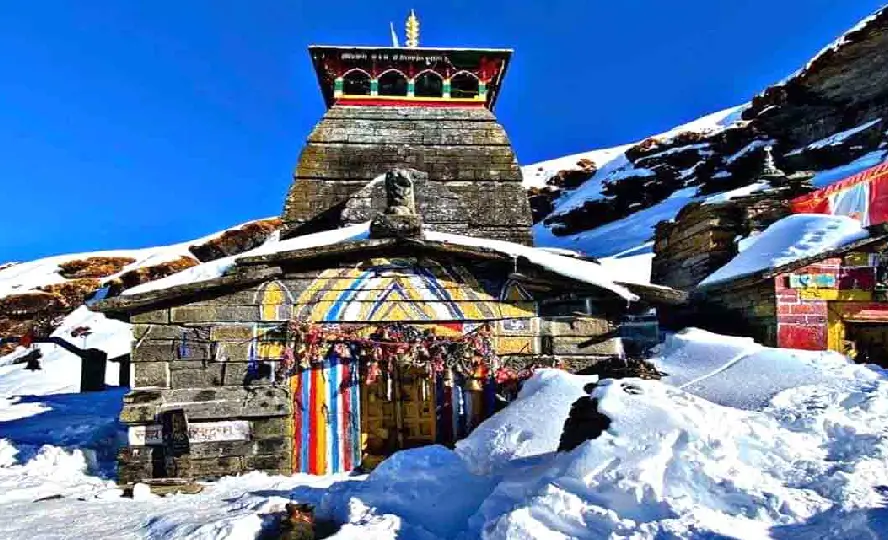
Wildlife and Flora Changes to Expect on Your Chopta Tour
Chopta is known for its rich biodiversity, which changes beautifully as the seasons transition from summer to autumn and winter. This transformation makes every Chopta tour package a unique natural experience.
Flora Changes
- In late summer and early autumn, Chopta is lush with green meadows blooming with wildflowers like Buransh (rhododendron), which turns vibrant red and pink from March to April.
- As autumn progresses, the green meadows begin to fade into shades of gold and brown. The forests surrounding the Chopta Tungnath trek route transform with colorful foliage, especially the oak, rhododendron, and pine trees.
- When winter arrives, the region becomes snow-covered, and most plants enter a dormant phase. Snow blankets the forests and meadows, creating a pristine white landscape that contrasts sharply with the warmer months.
Wildlife Changes
- During summer and autumn, wildlife such as barking deer, Himalayan Monal (the state bird of Uttarakhand), musk deer, and various Himalayan birds are active and visible along the trekking routes.
- As temperatures drop in early winter, many animals migrate to lower altitudes or enter hibernation, reducing sightings.
- Early winter trekking, included in some Chopta trekking tour packages, offers opportunities to spot fewer but distinct species adapted to cold weather, like the snowcock or Himalayan black bear cautiously preparing for hibernation.
Nature’s Special Attractions
- The changing seasons also bring different bird populations, making Chopta excellent for birdwatching through the year, particularly during autumn and early winter.
- Photographers enjoy the contrasting landscapes: lush green in late summer and golden hues in autumn, transitioning to breathtaking snow scenes in winter.
Experiencing these changes in flora and fauna adds a deep dimension to your Chopta tour package from Delhi or any other starting point, making the trek more immersive and memorable. Planning your trip according to seasonal highlights ensures you get the best wildlife and nature experiences in Chopta.
Camping Adventures and Bonfire Experiences in Early Winter at Chopta
Camping in Chopta during early winter is a magical experience that many travelers eagerly await. The region, located at an elevation of around 2,680 meters, offers pristine camping spots surrounded by pine and rhododendron forests, with breathtaking views of snow-capped peaks like Nanda Devi, Trishul, and Chaukhamba. Many Chopta tour packages include camping along the popular trekking routes to Tungnath and Chandrashila, where adventurers can enjoy peaceful nights under clear starry skies.
Top Camping Spots in Chopta:
- Deoriatal Lake: A serene camping location about 3 km from Chopta, perfect for nature lovers, surrounded by oak and rhododendron trees with spectacular reflections of mountains on the lake surface.
- Tungnath Base Camp: Conveniently located at the start of the famous trek, offering basic amenities and stunning mountain views.
- Chopta Meadows: Ideal for beginner campers, this spot has nearby facilities, making it family-friendly.
- Along Chandrashila Trek: Camping at flat, designated areas near the summit offers the advantage of catching early sunrises and panoramic Himalayan views.
- Rohini Bugyal: Suited for experienced trekkers, this high-altitude meadow provides a true wilderness camping experience.
Bonfire Experiences:
Evenings around the bonfire make camping in Chopta during winter truly special. The bonfire not only offers warmth against chilly mountain nights but also creates a social atmosphere where trekkers share stories, songs, and local folklore. Paired with hot beverages and traditional meals provided by many camps, this creates unforgettable memories.
Important Tips for Winter Camping:
- Pack warm sleeping bags and thermal clothing.
- Choose camps with sturdy tents that can withstand sub-zero temperatures.
- Carry a flashlight or headlamp and essential camping gear.
- Follow local guidelines and respect the natural environment.
Camping in Chopta’s winter landscape is perfect for those seeking adventure and tranquility, making it a highlight of any Chopta trekking tour package experience.
This blend of natural beauty, cozy camping, and vibrant bonfire nights ensures a memorable winter journey in the Himalayas.
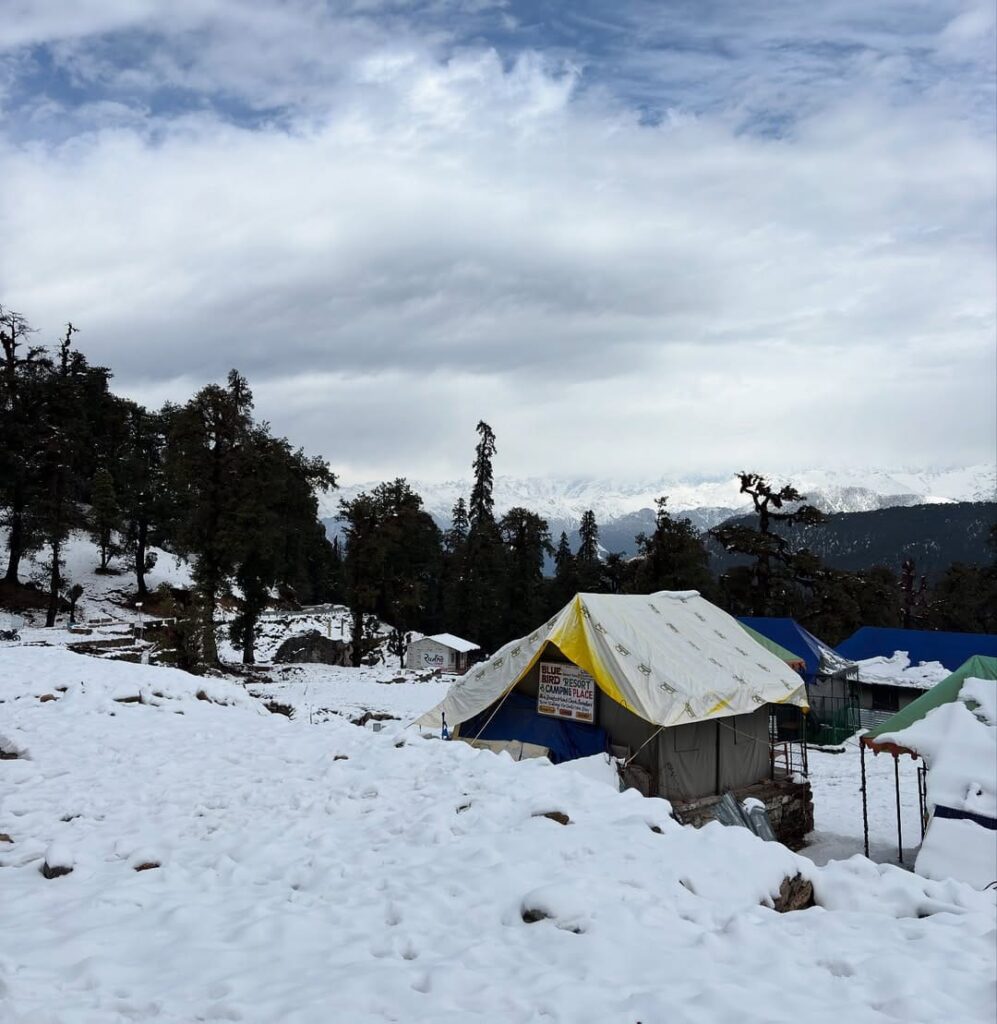
Weather Conditions and Safety Tips for Autumn to Winter Transitions in Chopta
As the season changes from autumn to winter in Chopta, weather conditions become cooler and more unpredictable. Daytime temperatures range between 7°C to 15°C, while nights can drop sharply below freezing, often reaching -10°C or lower in peak winter months. Snowfall begins in late November, gradually covering the trekking routes in a white blanket. This seasonal transition provides stunning landscapes but also calls for extra caution and preparation during trekking.
Key Weather Characteristics:
- Fluctuating temperatures: warm during the day, very cold at night
- Snowfall starts late November, increasing through December to February
- Possible icy and slippery trails on trekking routes like the Chopta Tungnath trek and Chandrashila summit trek
- Clear skies often during autumn but increased chances of snowfall and occasional snowfall storms in winter
Safety Tips for Trekkers:
- Always check updated weather forecasts before starting your trek.
- Dress in layers with thermal innerwear, fleece jackets, and waterproof outerwear to adjust to changing temperatures.
- Wear sturdy waterproof trekking shoes with good grip to avoid slips on icy or wet parts of the trail.
- Use trekking poles for stability on snowy or slippery sections.
- Stay hydrated and carry high-energy snacks to sustain energy during cold weather treks.
- Trek with experienced guides, especially during winter, included in many Chopta tour packages.
- Avoid unnecessary risks such as trekking alone or venturing out during heavy snowfall.
- Inform someone about your trekking plans and expected return times.
- Carry basic first aid supplies and emergency contact numbers.
Preparedness and careful planning ensure a safe and enjoyable trekking experience through Chopta’s remarkable autumn to winter transition. Adhering to these tips lets visitors fully appreciate nature’s beauty and spiritual journey in this spectacular Himalayan region.
This advice is essential for anyone booking a Chopta Trekking Tour Package for the 2025 season.
Booking Your Chopta Tour Package 2025: Tips and Recommendations
Planning and booking your Chopta tour package for 2025 can make your trekking experience smooth and memorable. Here are some useful tips and recommendations to help you choose the best package, especially if you are considering trusted providers like TourMyHoliday.
Choose the Right Package:
- Look for packages that include popular treks such as the Chopta Tungnath trek and the Chopta Chandrashila trek.
- Ensure the package covers accommodation, meals, transportation, permits, and expert guides for a hassle-free experience.
- TourMyHoliday offers well-structured Chopta tour packages with all these essential inclusions, tailored to different group sizes and budgets.
Book Early:
- Trekking in Chopta is popular between September and early December and resumes after winter closure. Booking early secures your spot and helps get better rates, especially for peak seasons.
- Early booking with providers like TourMyHoliday guarantees availability of preferred accommodations and smooth logistics.
Check Reviews and Reputation:
- Choose tour operators with good reviews, proven safety records, and professional guides. TourMyHoliday is known for reliable service and positive customer feedback for Chopta trekking tours.
Prepare According to Season:
- Pack clothes and gear suitable for autumn to early winter conditions. Many TourMyHoliday packages include detailed pre-trek guidance on packing and preparation.
Consider Your Fitness Level:
- Select trek packages that match your fitness and experience. Some Chopta trekking tour packages may offer options for shorter or less demanding treks.
Additional Tips:
- Confirm cancellation and refund policies in case of weather disruptions.
- Discuss special requests such as vegetarian meals or private group arrangements prior to booking.
Booking with a trusted operator like TourMyHoliday ensures a well-organized, safe, and enjoyable Chopta trekking experience in 2025. Planning ahead lets you focus on the adventure and spiritual journey that Chopta uniquely offers.
This way, your Chopta tour package becomes a seamless gateway to explore the beauty and culture of the Himalayas.
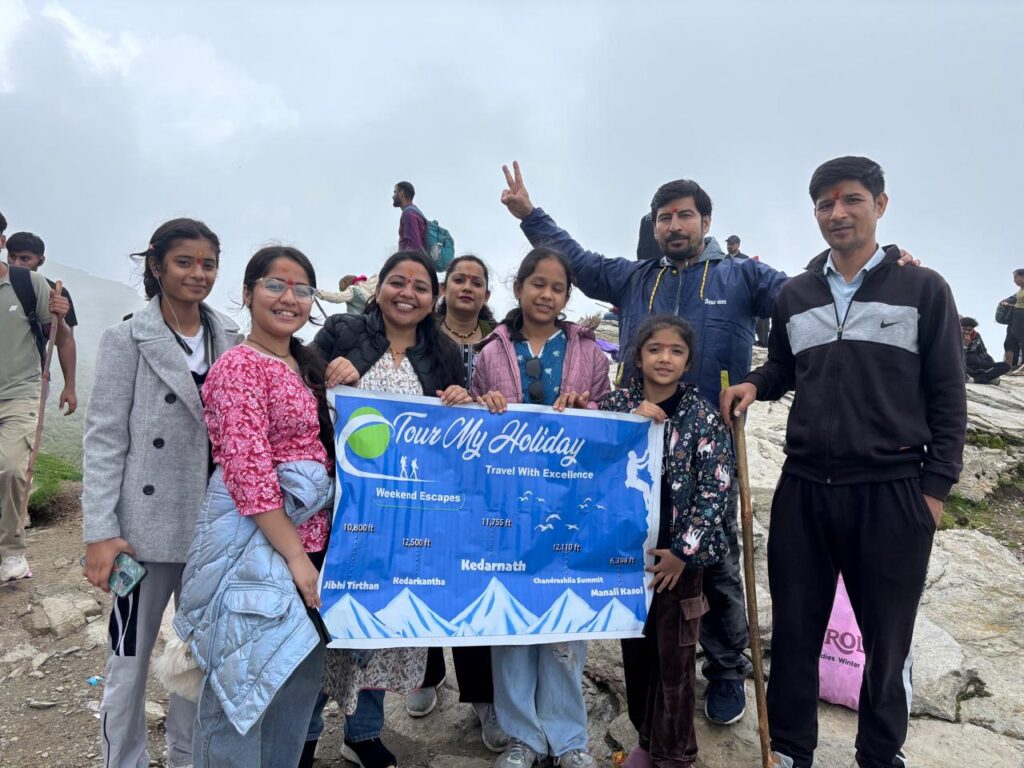
Frequently Asked Questions:
What is the best time to visit Chopta for trekking?
The best time to trek in Chopta is from March to June and September to November because the weather is pleasant and the trails are accessible.
How difficult is the trek to Tungnath from Chopta?
The trek to Tungnath is moderate and suitable for beginners and families, with a gradual ascent and well-marked trails.
What is included in a typical Chopta trekking package?
Packages generally include transportation, accommodation, meals, trekking permits, and experienced guides.
Can beginners participate in Chopta treks?
Yes, many packages cater to beginners with easy trails and guided support to ensure safety.
Are camping and bonfires part of the trekking experience in Chopta?
Yes, camping and bonfire experiences are common and add a memorable aspect to the trek.
What kind of wildlife might one see during the trek?
Trekking in Chopta allows sightings of birds like Monal, barking deer, musk deer, and other Himalayan wildlife.
How long is the trek from Chopta to Tungnath and Chandrashila?
The trek is approximately 4-5 km to Tungnath plus an additional 1.5 km to Chandrashila summit.
Do I need permits to trek in Chopta?
Yes, permits are required and usually arranged by tour operators.
When is Tungnath Temple accessible for pilgrims and trekkers?
The temple is generally open from April to November and closed in winter due to snow.
What should I pack for the seasonal trek in Chopta?
Warm layered clothes, waterproof shoes, gloves, hats, and a sleeping bag if camping are advised.
Are guides necessary for the trek?
Guides are recommended for safety and local knowledge during the trek.
Where can I book a trusted Chopta trekking package?
Many reliable tour operators offer well-planned packages with accommodation, transport, and guides.
